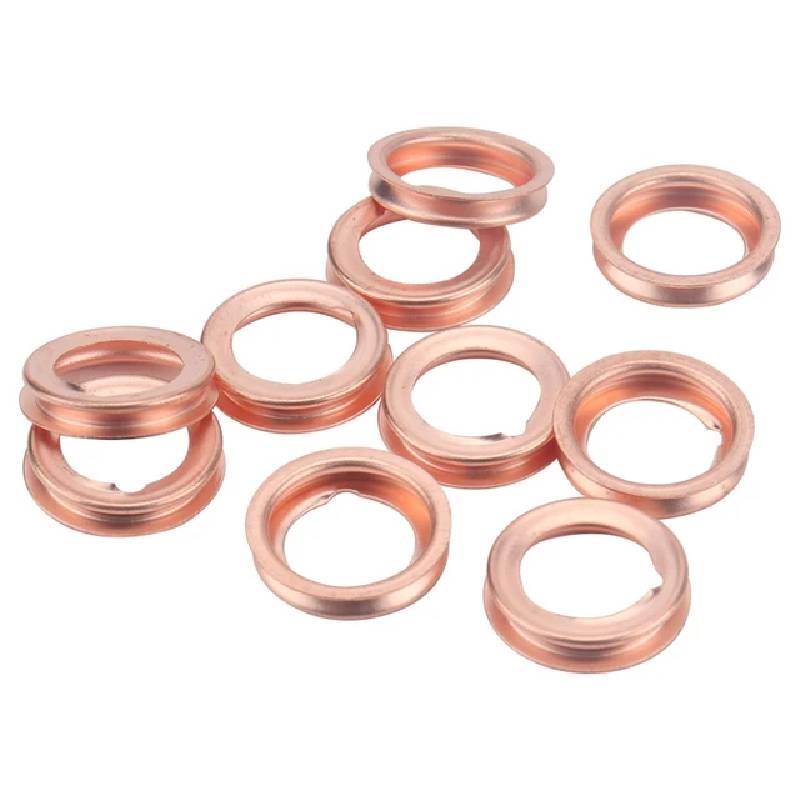half shaft seal
Understanding Half Shaft Seals Importance and Maintenance
Half shaft seals, also known as axle seals, play a critical role in the functionality and longevity of a vehicle's drivetrain. Positioned at the point where the half shaft enters the differential or transmission, these seals are designed to keep lubricating fluid contained while preventing dirt, water, and debris from entering the internal components. Understanding the importance of half shaft seals, their common issues, and maintenance can help vehicle owners ensure their systems run smoothly.
Importance of Half Shaft Seals
Half shaft seals are essential for a few key reasons. Firstly, they maintain the proper lubrication of the differential or transmission. This lubrication is vital as it reduces friction and heat that can lead to extensive wear, mechanical failures, or catastrophic breakdowns. A compromised seal can lead to oil leaks, which not only diminish the efficacy of the lubrication but also increase the risk of damage and costly repairs.
Secondly, half shaft seals protect the sensitive internal mechanisms from contaminants. Dirt and moisture can lead to corrosion and premature wear, affecting the performance and lifespan of critical components. When half shaft seals function correctly, they effectively create a barrier that safeguards these parts.
Common Issues
half shaft seal

Despite their significance, half shaft seals can wear out over time due to several factors. Age and mileage are primary contributors; as vehicles age, the rubber or material of the seal can deteriorate, leading to cracks and leaks. Exposure to extreme temperatures, either high or low, can also cause the material to harden or soften, compromising its sealing capabilities.
Another common issue arises from improper installation. If a seal is installed incorrectly, it may fail to create an adequate seal, leading to leaks and other complications. Furthermore, an imbalance in the half shaft assembly or misalignment can place undue stress on the seal, leading to premature failure.
Maintenance and Replacement
Regular maintenance is crucial for ensuring the integrity of half shaft seals. Vehicle owners should periodically inspect the seals for signs of fluid leaks, which might indicate a failure. Additionally, checking the lubricant levels in the differential or transmission is important, as low levels can lead to increased heat and friction, causing excessive wear not only on the seals but on the components they protect as well.
If a leak is detected, it is essential to address it promptly. Replacing a leaking half shaft seal can be a straightforward process, but it is critical to ensure that the replacement seal is installed correctly. In many cases, professionals recommend replacing not only the damaged seals but also the fluid within the differential or transmission to ensure optimal performance.
In conclusion, half shaft seals are small components with a significant impact on the health of a vehicle’s drivetrain. Regular maintenance and prompt attention to any signs of wear can help extend the life of these seals and, consequently, the components they protect. By understanding their importance and keeping an eye on their condition, vehicle owners can avoid costly repairs and ensure a smoother, more reliable driving experience.
-
The Ultimate Guide to Car Repair Kits: Tools and Essentials Every Driver Should Own
News Aug.01,2025
-
The Complete Guide to Oil Pan Gaskets: Sealing Engine Leaks the Right Way
News Aug.01,2025
-
Preventing Oil Leaks: A Complete Guide to Oil Pan Gaskets and Drain Seals
News Aug.01,2025
-
Everything You Need to Know About Oil Pan Gaskets and Drain Plug Seals
News Aug.01,2025
-
Essential for Car Owners: How to Use a Car Repair Kit to Deal with Minor Breakdown
News Aug.01,2025
-
Comprehensive Guide to Engine Oil Sump Gaskets and Related Seals
News Aug.01,2025
-
The Ultimate Guide to Boat Propeller Bearings and Trailer Wheel Bearings
News Jul.31,2025
Products categories















